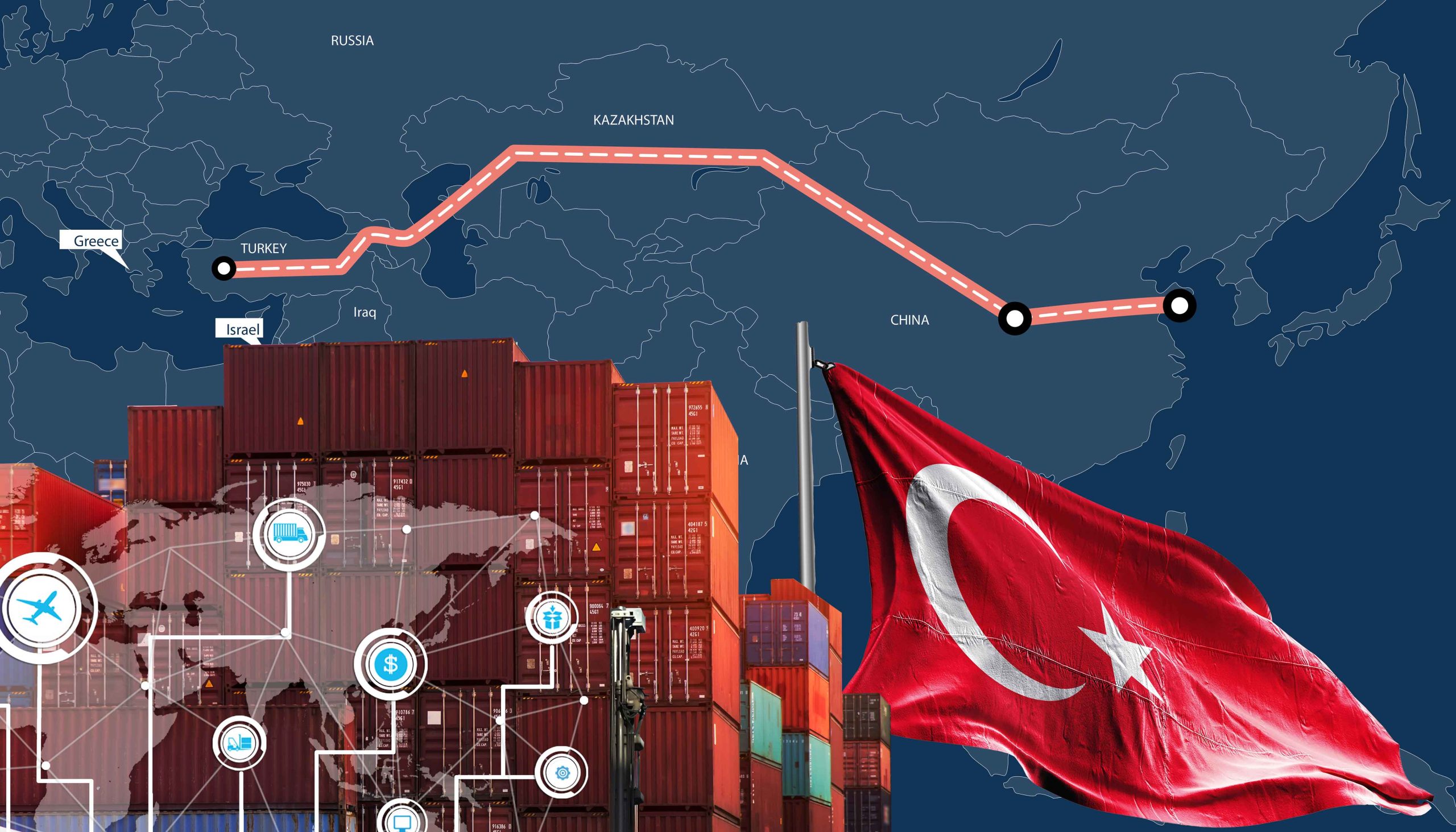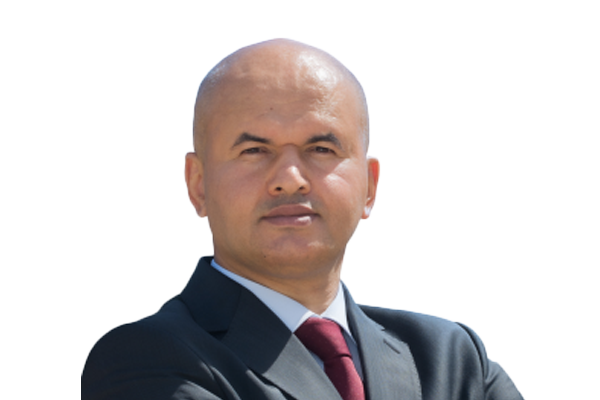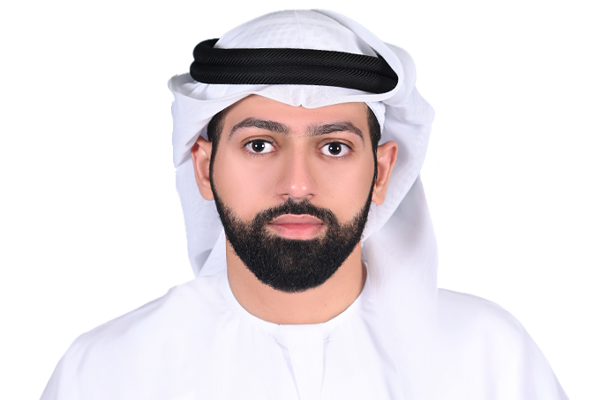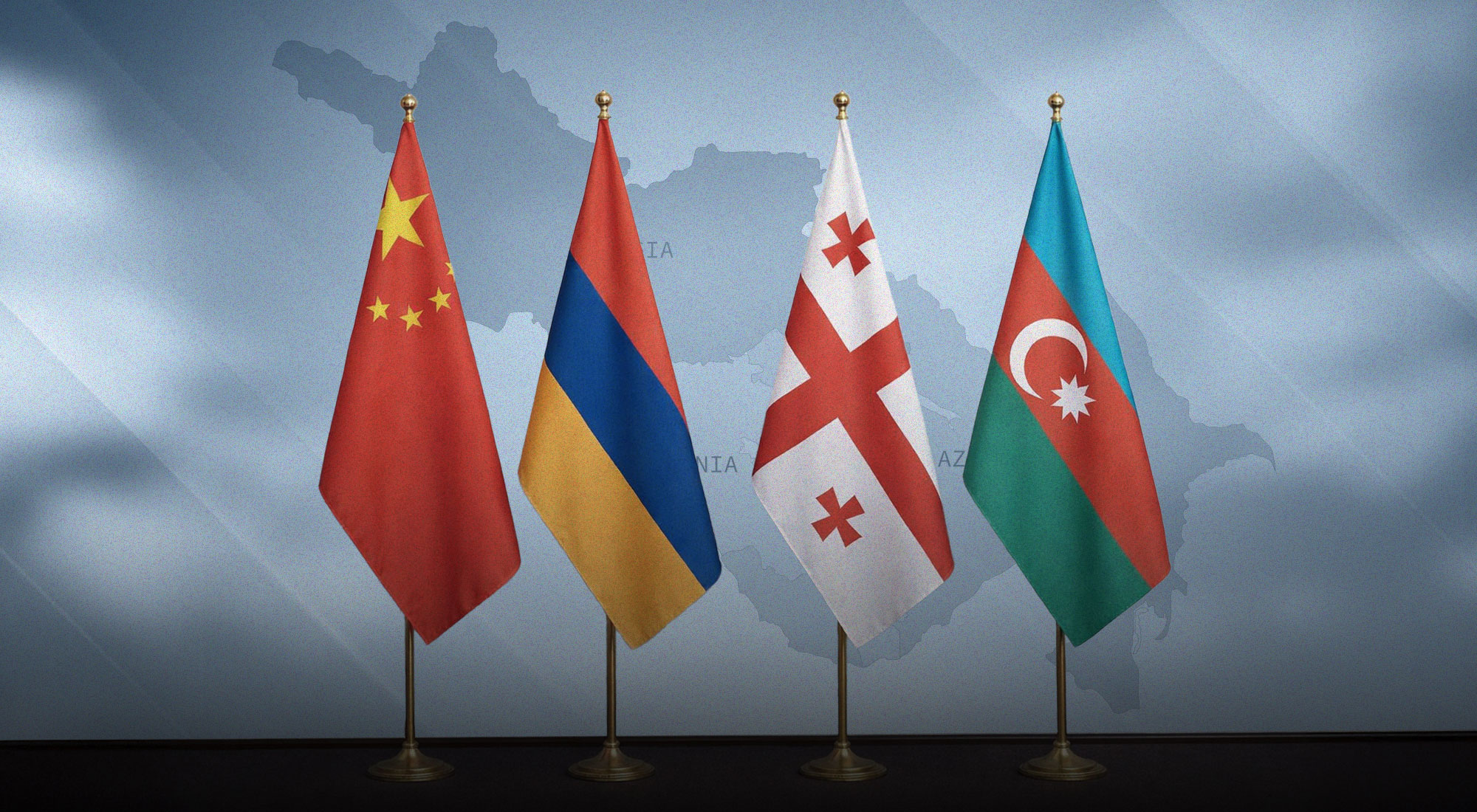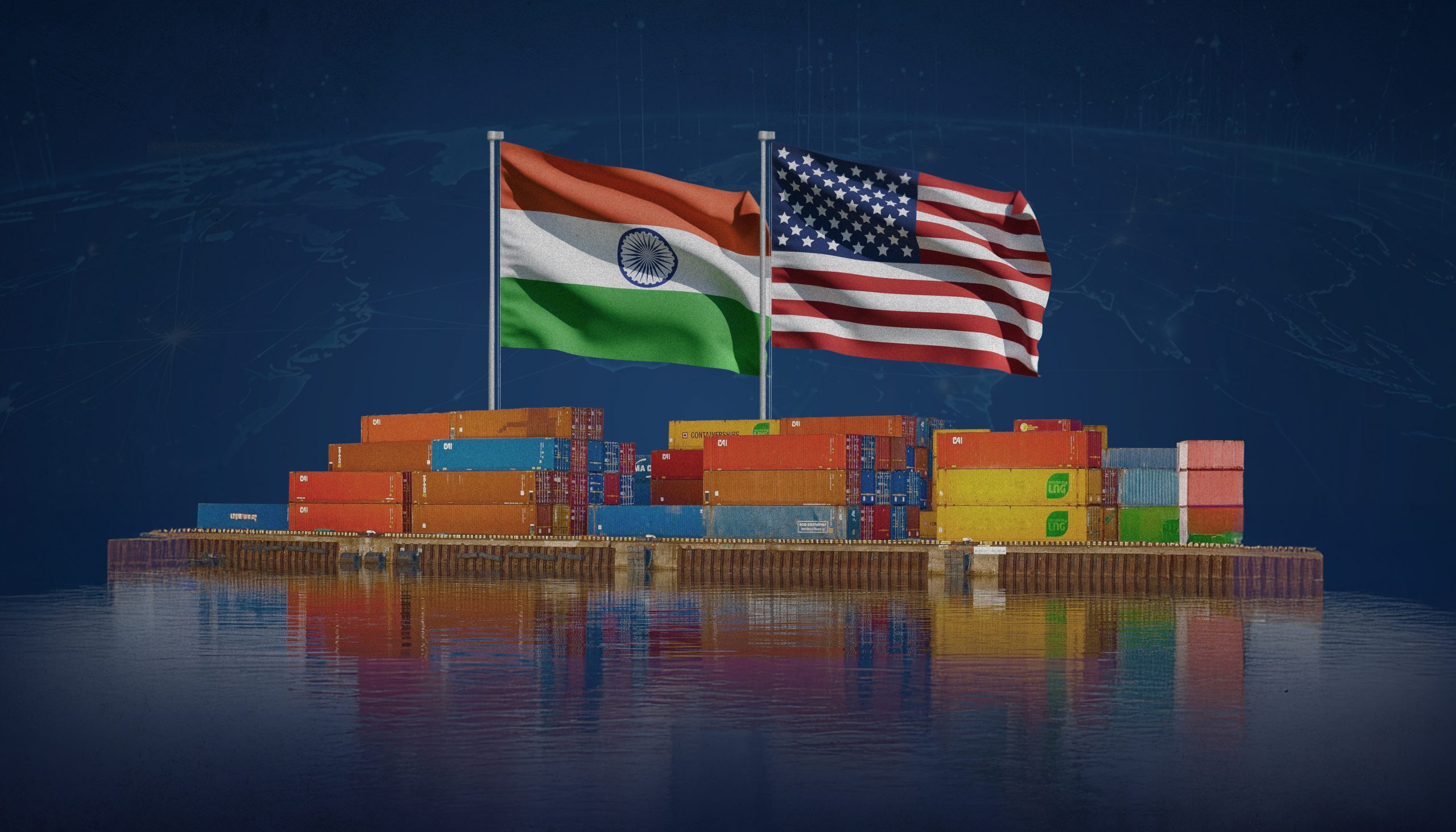Amidst rising tensions and disruptions to maritime trade along the Mediterranean-Indian Ocean route, another trade corridor that roughly coincides with the ancient Silk Road has once again heightened in importance: The Middle Corridor, also known as the Trans-Caspian International Transport Route (TITR), is an inter-modal trade artery that connects Europe to China. TITR’s existing infrastructure, safer transit routes, and faster travel times offer cargo carriers key advantages over the Northern (Russian) and Southern (Indian Ocean) corridors for transporting goods.
Türkiye, a key player on this route, has set a significant milestone in its strategic vision for regional economic growth and global commercial integration with its goal to triple the volume of trade through the Middle Corridor by 2030. Recognizing the Middle Corridor’s historical significance as an essential trade route between Asia and Europe, Türkiye seeks to utilize its advantageous location to drive economic development and promote global trade. It plays a crucial role in realizing the full potential of the corridor by optimizing infrastructure investments, streamlining operations, and strengthening cooperation with regional and global partners, all while implementing a comprehensive strategy.
The comprehensive plan aimed at reviving the Middle Corridor as a vibrant route for commerce and investment is at the core of Türkiye’s ambitious economic vision. Ankara hopes to stimulate economic growth both inside its borders and throughout the wider region by fostering commerce along this vital route, supporting stability and prosperity. Türkiye hopes to make the Middle Corridor a smooth and effective route for products and services through focused projects and collaborations, drawing companies, investors, and stakeholders eager to capitalize on its strategic importance.
Türkiye’s bold aim to treble Middle Corridor trade by 2030 highlights its commitment to sustainable economic growth and regional integration as it positions itself as a major participant in global trade. The country wants to create new opportunities for cooperation, innovation, and prosperity along the Corridor by utilizing its geographic location and historical heritage. By doing so, it hopes to further global commerce and economic interconnection in the years to come.
Türkiye and the Middle Corridor
Türkiye is an important participant in the Middle Corridor due to its location at the intersection of the trade routes between Europe, Asia, and Africa. By constructing a multimodal route along the TITR, Ankara hopes to strengthen regional cooperation with transit states and link Eurasia.[1] This program is a component of Türkiye’s broader plan to expand its trading alliances and strengthen its economic clout. By diverting 30% of the flows that presently pass via the Northern Corridor, the Middle Corridor provides Türkiye with a strategic avenue to become a major player in global trade, thereby decreasing dependency on current routes.[2]
Promoting connectedness and regional economic vibrancy is part of its endeavor. Beyond the construction of infrastructure, Ankara uses a multimodal strategy that encompasses bilateral, trilateral, and multilateral interactions. Through the use of diplomatic channels and strategic partnerships, Türkiye accentuates the benefits of the Middle Corridor, creating an atmosphere that is favorable to investment and trade. The goal of this strategy is to provide the conditions for long-term economic development and growth.[3]
To promote peace and prosperity in the South Caucasus and Central Asia—regions characterized by historical conflicts and economic problems—the EU and Türkiye have a shared interest in enhancing Eurasian connectivity. Improving commercial access to Central Asia boosts trade diversity, enhances European supply networks, and lessens reliance on isolated routes. Building stronger ties with partners in Eurasia can also lead to access to other energy sources, which can lessen reliance on conventional suppliers. In addition to furthering economic and geopolitical goals, this concerted effort acts as a strategic counterbalance to the influence of regional countries like China, Russia, and Iran in Central Asia. It also fosters stability and collaboration.[4]
The Middle Corridor’s Advantages
The Middle Corridor trade route offers several benefits that make it an attractive alternative to traditional trade routes. Some of the key advantages include:
Shorter Distance and Reduced Transit Times: The Middle Corridor is a more effective option for international trade between Europe and Asia, being around 3,000 miles shorter than the Northern Corridor. Due to the considerable reduction in distance, transit times are shortened, which benefits businesses by enabling them to deliver products more quickly and compete more successfully on the global market. Furthermore, the efficiency of the Middle Corridor reduces transportation costs, giving enterprises a financial advantage.[5]
Increased Transit Fee Income: The Middle Corridor’s shipping volumes will increase, which will help the nations that border it by increasing transit charge income. By reinvesting these additional monies in infrastructure development, the capacity and efficiency of the corridor may be further boosted. Additionally, the revenue earned boosts regional economies, promoting stability and expansion.[6]
Security and Compliance: Access to markets in the South Caucasus, the Caspian Sea, and Central Asia—regions underrepresented in conventional global trade networks—is made possible via the Middle Corridor. This path promotes economic expansion, especially helping the member nations’ industrial sectors. Enhanced export competitiveness and the advancement of value-added goods benefit domestic enterprises by stimulating innovation and employment growth. This strategy promotes long-term regional prosperity and sustainable development.[7]
Agency for Central Asia: By utilizing the Middle Corridor, nations in Central Asia may fortify their sovereignty and diversify their economic alliances by decreasing their dependence on Russia and China for infrastructure and logistics. Creating other channels and logistical networks helps these nations become more economically independent while strengthening their resistance to global pressures.[8] These countries can increase their ability to withstand geopolitical pressures and push toward greater economic independence by developing other routes and logistical networks.[9]
Türkiye-EU Economic Cooperation: By boosting trade and commercial links, the Middle Corridor not only creates significant economic potential for Central Asia but also promotes greater economic cooperation between Türkiye and the EU. Through fostering cross-border cooperation and broadening the destinations of labor migration, the corridor enhances regional prosperity. Expanded economic opportunities, less reliance on conventional migration routes, and enhanced regional collaboration are advantageous for European countries. Reaching the corridor’s full potential can foster economic interconnectedness and stability for years to come.[10]
Diversification of Trade Routes: By using the Middle Corridor, Türkiye has a strategic chance to diversify its economic routes and lessen its dependency on geopolitical disruptions. This might have a major influence on the dynamics of global trade and geopolitical balance, as well as move existing centers of economic power. Programs like the Middle Corridor also encourage more collaboration and interconnection, which spreads peace and prosperity throughout the world’s economies. The Middle Corridor acts as a catalyst to change the dynamics of international commerce and increase resilience in an unpredictable world.[11]
Bilateral and Multilateral Agreements, Türkiye and the Middle Corridor
With the bordering countries of the Middle East, Türkiye has deliberately sought regional cooperation and commerce through several bilateral and multilateral agreements. The founding of the Cooperation Council of Turkic Speaking States in 2009—which would subsequently become the Organization of Turkic States (OTS) in 2021—was an important turning point. This move is a clear indication of Türkiye’s determination to formalize and fortify relations with other Turkic-speaking nations to further institutionalize cooperation for political and economic unification.[12]
Türkiye and China signed a Memorandum of Understanding (MoU) in 2015 to coordinate China’s Belt and Road Initiative (BRI) with Türkiye’s Middle Corridor plan. By taking this action, the BRI’s infrastructure and investment prospects were to be leveraged, as well as the connection between Asia and Europe. Türkiye aims to improve the Middle Corridor’s efficiency and attractiveness for international trade by bringing in investments, standardizing legislation, and expediting customs processes. Türkiye’s strategic alignment facilitates economic development and increases its influence in international commerce, positioning it as a major player in the area.[13] Türkiye has demonstrated its proactive approach to economic growth and integration in the area by promoting regional cooperation and improving commerce through strategic partnerships and initiatives like the OTS and the MoU with China.[14]
Collaboration with the Private Sector over the Middle Corridor
Türkiye is working closely with the private sector to improve infrastructure, optimize operations, and spur economic growth along the Middle Corridor. Collaboration between governmental and private organizations is essential to the initiative’s successful implementation. Infrastructure development, trade, logistics, customs, and regulatory compliance are just a few of the areas where the corridor performs much better when the private sector is involved. It also adds efficiency, capital, and knowledge to the table.[15]
Through their investment in the development of important projects such as ports, highways, railroads, and logistics centers along the Middle Corridor, private firms play a crucial role in infrastructure development. These expenditures are essential for improving connections and enabling the smooth flow of products and services. Involving the private sector in logistics and operations management also contributes to optimizing the corridor’s potential and guaranteeing smooth operations by streamlining supply chains, cutting down on transit times, and improving transportation efficiency.[16]
Additionally, private businesses may make use of the Middle Corridor’s benefits to grow their networks of trade, enter new markets, and draw in foreign investment. Engagement with the private sector propels economic advancement in the area, encourages innovation, and creates job possibilities. For smooth cross-border trade, private companies should be involved in customs and regulatory compliance. They can work with government agencies to remove obstacles and expedite customs processes. To put it simply, Türkiye’s engagement with the private sector is essential to achieving the Middle Corridor’s full potential, bolstering infrastructure, streamlining logistics, fostering trade, and accelerating economic expansion. This relationship serves as a reminder of how crucial public-private partnership (PPP) is to improving regional connections and promoting long-term economic growth.[17]
Environmental and Social Impact of the Middle Corridor
From an environmental point of view, the EU’s commitment to advancing environmentally friendly global connectivity is consistent with the Middle Corridor’s focus on sustainability. The initiative’s emphasis on ecological sustainability might make it difficult to compete with Chinese investments, which sometimes have laxer environmental regulations.[18] However, increased freight traffic contributes to air and noise pollution, while the risk of oil spills and other hazardous materials poses a constant threat to local water bodies and soil quality. Addressing these environmental challenges requires stringent regulations, sustainable planning, and the adoption of green technologies to minimize the ecological footprint of the corridor.
Regarding the Middle Corridor’s social impact, it offers prospects for increased economic growth and improved cooperation outside of transportation, strengthening the bonds between member nations. By reducing reliance on Russia and Iran, the effort gives Central Asian nations more choices for the development of their infrastructure and economic diversification. On the positive side, the Corridor can drive economic development, create jobs, and improve access to markets, healthcare, and education for local populations. Enhanced connectivity may foster cultural exchange and regional integration, promoting greater stability and cooperation among the countries involved. It also presents opportunities for job creation and economic growth in the region.
However, concerns exist around the potential displacement of local communities due to land acquisition for infrastructure projects. The unequal distribution of benefits could also exacerbate existing social disparities. To ensure the project’s success, careful planning and mitigation strategies are crucial. This includes minimizing environmental damage, ensuring fair compensation for land use, prioritizing projects that benefit local populations, and fostering sustainable development in Central Asia.
Partnerships and International Cooperation
Türkiye has strategic partnership agreements with Kazakhstan and Uzbekistan to implement the Middle Corridor project. The foreign, economic, and transportation ministries of Türkiye, Uzbekistan, and Azerbaijan met in Tashkent on 2 August 2022, with the goal of forming a trilateral structure that would improve coordination and collaboration between the three Turkic-speaking countries over Middle Corridor-related issues.[19]
Amid existing security and geopolitical instability with the Northern and Southern corridors, Kazakhstan’s ports are pivotal for the success of the Trans-Caspian International Transport Route (TITR). The nation is allocating substantial resources to attract international investments to the Aktau and Kuryk seaports, which are vital maritime trading ports on the Caspian Sea.[20] Kazakhstan aims to expand Aktau’s port capacity by building a new container hub known as the Sarzha project. This project will enhance cargo traffic and container shipping, improving the capacity of the port by more than 500 percent by 2025. Additionally, a presidential decree issued in June 2023 incorporated these seaports as special economic zones (SEZ) to boost international investment and logistics. [21]
Shortly after Türkiye and the UAE signed a Comprehensive Economic Partnership Agreement (CEPA), the UAE and Kazakhstan announced in October 2023 increased investment in bilateral trade, targeting US$1 billion annually, focusing on high-income sectors such as energy, agriculture and mobility. The Minister of Trade and Integration of Kazakhstan, Arman Shakkaliyev, shared plans for new trade routes extending from the Caspian Sea to Abu Dhabi and Dubai ports, increasing trade and creating new business opportunities for the UAE to invest in Central Asia and neighboring countries. Since then, Abu Dhabi Ports signed two agreements with the oil and gas company KazMunayGas (KMG) and Kazakhstan Railways to prioritize overseas growth in Kazakhstan.[22] The Middle Corridor’s future seems promising as it contributes to economic independence, diversification and job creation for the involved countries. The UAE aims to leverage its strategic location and stimulate its trade agreements in the region.
Complementary to the Middle Corridor and alongside the UAE’s ambitious strategy to diversify its economy and solidify its position as a global trading hub, the India-Middle East-Europe Economic Corridor (IMEC) initiative was announced in September 2023 at the G20 event for “Global Infrastructure and Investment”. The (IMEC) initiative consists of several trading routes that connect Asia to the Middle East, extending to Europe. It will include the construction of railway lines and the utilization of existing seaports to expand trade in sectors like clean energy and telecommunication technology.[23] Reinforcing the country’s position as a global strategic trading hub and creating new economic opportunities for various countries and investors in different sectors. Although the IMEC and Middle Corridor are two different trading routes, with different countries involved, the IMEC connects Asia to Europe through the Middle East, whereas the Middle Corridor focuses on Central Asian countries. Both initiatives aim to increase global trade resiliency and decrease dependency on current trading routes that are unstable, fostering trade competition between countries and stimulating their economies.
A unifying objective of the IMEC and the Middle Corridor is to strengthen the resilience of global trade. These projects lessen reliance on established trade routes that can be affected by instability, geopolitical unrest, or other interruptions by providing alternative routes. The movement of products and services across continents is made more steady and dependable by the diversity of trade channels. These programs also aim to promote international competition, which can result in more economical and successful trading practices. Countries are urged to upgrade their infrastructure, expedite customs processes, and increase their overall trading capacity by fostering competition. For the participating countries, this can therefore result in economic expansion, the creation of jobs, and a rise in economic stability.
In addition to these, Türkiye, along with Bulgaria, Serbia, and Hungary, has established working groups and a quadrilateral coordination council to optimize freight exports along the Middle Corridor to southern Europe. Furthermore, Türkiye has started offering new high-speed train services. It is anticipated that joint investment in freight transportation will improve the southern European section of the Middle Corridor by enlarging the rail network, increasing cargo capacity, and streamlining border procedures.[24]
To expand the Middle Corridor, Türkiye has made significant financial commitments and supported regional projects. The Baku-Tbilisi-Kars (BTK) railway, sometimes known as the “Iron Silk Road,” was inaugurated in 2017 with partial funding from the Japan International Cooperation Agency and the European Investment Bank. Türkiye’s connectivity to the republics of Central Asia and the South Caucasus has enhanced with the resumption of direct rail travel via the BTK railway.[25]
Impact of the Middle Corridor on Türkiye’s Energy Sector
The Middle Corridor initiative, which establishes Türkiye as a vital regional energy hub, serves as the cornerstone of its efforts to bolster its energy security. Türkiye serves as a vital conduit for fossil fuels, especially natural gas, which lessens the reliance of neighboring Turkic nations on supplies from Russia and Iran. Türkiye is strategically positioned between energy-rich Middle Eastern regions and energy-demanding European regions. The Middle Corridor further increases Türkiye’s significance as an energy center.[26]
Along the TITR, the project fosters regional cooperation and coordination among transit states while establishing a direct link to Eurasia. With this scheme, Türkiye hopes to establish itself as a regional energy center, which will help Europe maintain energy security, particularly as it works to lessen its need for Russian supplies. The project also advances Türkiye’s foreign policy objectives by enhancing its influence in the regional and global energy arenas.[27] By offering a crucial transit route, the Middle Corridor project not only improves Türkiye’s energy security but also strengthens regional cooperation and establishes Türkiye as a significant player in the global energy arena.
Challenges against the Middle Corridor
Significant economic prospects across Eurasia might be unlocked via the Middle Corridor, a strategically important trade route that connects Türkiye to China through a network of nations that includes Georgia, Azerbaijan, and possibly Kazakhstan, Turkmenistan, Uzbekistan, and Kyrgyzstan. But despite its promise, the corridor faces a variety of challenges that prevent it from being fully realized and impede its growth.[28]
Operating inefficiencies resulting from idle ports and inadequate rail infrastructure are among the Middle Corridor’s main problems. These inefficiencies impede the smooth flow of commodities throughout the route and cause delays and higher expenses. The complex process of transferring oil from Kazakhstan to Azerbaijan through several transshipment steps serves as an example of the significant challenge posed by the absence of adequate infrastructure for the transportation of gas and oil in the Caspian and Trans-Caspian areas.[29]
To modernize current facilities and increase overall efficiency, significant expenditures of approximately €18.5 billion are needed to address these infrastructural deficiencies. The viability of the corridor also depends on reducing reliance on Russian infrastructure and managing geopolitical challenges, including local unrest and rivalry with the well-established Northern Corridor. Governments, corporations, and international organizations must work together to improve operational effectiveness, build reliable infrastructure, and promote economic diversity along the way to overcome these obstacles.[30]
Furthermore, promoting closer collaboration with China and the EU is crucial to the Middle Corridor’s long-term sustainability. This means creating regional industrial and trade zones, integrating into global supply networks, and adhering to international norms and laws. The Middle Corridor has the potential to become an essential route for trade and commerce, promoting economic growth and prosperity throughout the Eurasian continent, by resolving these obstacles and utilizing its strategic location.[31]
Conclusion
Türkiye’s ambitious endeavor to triple Middle Corridor trade by 2030 reflects a significant push to enhance the nation’s economic stature and expand its global influence. This transformative initiative is driven by a complex interplay of geopolitical, economic, and strategic factors, underscoring its profound importance within Türkiye’s overarching goals. By positioning itself as a central hub along the Middle Corridor, Türkiye aims to leverage emerging opportunities in global commerce while addressing vulnerabilities linked to traditional trade routes. This proactive approach has the potential to strengthen Türkiye’s economic resilience and competitiveness, acting as a catalyst for substantial economic growth and development across the broader region.
The plan highlights Türkiye’s proactive involvement in navigating international trade dynamics and geopolitical shifts. By tripling trade volumes along the Middle Corridor, Türkiye aims to diversify its economic portfolio and cultivate deeper economic ties with a wider array of nations. This initiative opens new avenues for collaboration and partnership, fostering increased economic interdependence and mutual prosperity among participating countries. Leveraging its strategic geographical location and historical trade routes, Türkiye seeks to harness the transformative potential of the Middle Corridor to spur economic innovation, enhance regional stability, and solidify its role as a key player in shaping the future of global trade.
In essence, the vision for the Middle Corridor goes beyond mere economic expansion; it encapsulates a strategic reevaluation of Türkiye’s position in the global economic landscape and a recalibration of broader geopolitical dynamics. By embracing this initiative, Türkiye reaffirms its commitment to promoting inclusive growth, sustainable development, and shared prosperity. As the Middle Corridor emerges as an essential conduit for global commerce, Türkiye is poised to capitalize on the diverse opportunities it presents, heralding a new era of economic dynamism and collaboration in the 21st century.
In addition, the Middle Corridor initiative highlights Türkiye’s importance as a vital conduit between the East and the West, encouraging enhanced cooperation and communication in a multitude of fields. This strategic initiative seeks to strengthen Türkiye’s international impact by promoting diplomatic and cultural ties in addition to strengthening commercial and economic ties. Through the strategic combination of its favorable geographic and geopolitical location, Türkiye hopes to become a major global center and influence commerce and diplomacy going forward.
[1] Russia’s War on Ukraine and the Rise of the Middle Corridor as a Third Vector of Eurasian Connectivity,” SWP, October 28, 2022, https://www.swp-berlin.org/10.18449/2022C64/.
[2] Felix K. Chang, The Middle Corridor through Central Asia: Trade and Influence Ambitions,” Foreign Policy Research Institute, February 21, 2023, https://www.fpri.org/article/2023/02/the-middle-corridor-through-central-asia-trade-and-influence-ambitions/.
[3] “Russia’s War on Ukraine and the Rise of the Middle Corridor as a Third Vector of Eurasian Connectivity,” op. cit.
[4] Deniz ÜNVER, “MIDDLE CORRIDOR AND ITS POTENTIAL ADVANTAGES,” AViM, October 11, 2022, https://avim.org.tr/Blog/MIDDLE-CORRIDOR-AND-ITS-POTENTIAL-ADVANTAGES-11-10-2022.
[5] Hunter Stoll, “The Middle Corridor: A Renaissance in Global Commerce,” RAND, May 12, 2024, https://www.rand.org/pubs/commentary/2024/03/the-middle-corridor-a-renaissance-in-global-commerce.html.
[6] Hunter Stoll, “The Middle Corridor: A Renaissance in Global Commerce,” The Diplomat, March 11, 2024, https://thediplomat.com/2024/03/the-middle-corridor-a-renaissance-in-global-commerce/.
[7] Elvira Mami, “The Middle Corridor: trends and opportunities,” ODI, January 22, 2024, https://odi.org/en/insights/the-middle-corridor-trends-and-opportunities/.
[8] Ibid.
[9] Deniz ÜNVER, “MIDDLE CORRIDOR AND ITS POTENTIAL ADVANTAGES,” op. cit.
[10] Hunter Stoll, “The Middle Corridor: A Renaissance in Global Commerce,” The Diplomat, op. cit.
[11] NATHAN ALAN-LEE, “Assessing the ‘Middle Corridor’ in a Risky World, Modern Diplomacy, January 26, https://moderndiplomacy.eu/2024/01/26/assessing-the-middle-corridor-in-a-risky-world/.
[12] Barçın Yinanç, “The Middle Corridor Calls for Turkish-European Cooperation,” The Turkey Analyst, January 17, 2023, https://www.turkeyanalyst.org/publications/turkey-analyst-articles/item/701-the-middle-corridor-calls-for-turkish-european-cooperation.html.
[13] Bahri Yilmaz, “The Belt and Road Initiative and the Impacts on Turkey as a part of the Middle Corridor,” SWP, May 2, 2022, https://www.swp-berlin.org/publications/products/arbeitspapiere/WP02_22_FG7_Yilmaz_BRI_Turkey.pdf.
[14] “Turkey Aims to Triple Middle Corridor Trade by 2030,” Oil Price.com, April 13, 2024, https://oilprice.com/Geopolitics/International/Turkey-Aims-to-Triple-Middle-Corridor-Trade-by-2030.html#:~:text=Turkey%2C%20Georgia%2C%20and%20Azerbaijan%20have,in%20trade%20volume%20by%202030.
[15] Barçın Yinanç, “The Middle Corridor Calls for Turkish-European Cooperation, op. cit.
[16] M. Sait Akman, “Turkey’s Middle Corridor and Belt and Road Initiative: Coherent or Conflicting?,” ISPI, November 29, 2019, https://www.ispionline.it/en/publication/turkeys-middle-corridor-and-belt-and-road-initiative-coherent-or-conflicting-24526
[17] “Turkey key in alternative trade routes like ‘Middle Corridor’,” Daily Sabah, March 31, 2021, https://www.dailysabah.com/business/transportation/turkey-key-in-alternative-trade-routes-like-middle-corridor.
[18] “Forging Sustainable Transport Connectivity: Enhancing EU-Central Asia Transportation Through the Trans-Caspian Corridor,” EIAS, March 1, 2024, https://eias.org/policy-briefs/forging-sustainable-transport-connectivity-enhancing-eu-central-asia-transportation-through-the-trans-caspian-corridor/.
[19] Republic of Turkiye, Ministry of Foreign Affairs, “No: 242, 1 August 2022, Press Release Regarding the Trilateral Meeting of the Ministers of Foreign Affairs, Trade and Transport of Türkiye, Uzbekistan and Azerbaijan,” https://www.mfa.gov.tr/no_-242_-turkiye-ozbekistan-azerbaycan-uclu-disisleri–ticaret-ve-ulastirma-bakanlari-toplantisi-hk.en.mfa.
[20] “Kazakhstan’s Ports: A Vital Node of the Middle Corridor,” The Diplomat, May 2023, https://thediplomat.com/2023/05/kazakhstans-ports-a-vital-node-of-the-middle-corridor/
[21] “Aktau and Kuryk ports included in Seaport Aktau Special Economic Zone,” The Astana Times, June 19, 2023 https://astanatimes.com/2023/06/aktau-and-kuryk-ports-included-in-seaport-aktau-special-economic-zone/
[22] “UAE and Kazakhstan Launch Trade Investment Platform,” AGBI, December 7, 2023, https://www.agbi.com/analysis/trade/2023/12/uae-and-kazakhstan-launch-trade-investment-platform/.
[23] “World Leaders Launch a Landmark India-Middle East-Europe Economic Corridor,” The White House, September 9, 2023, https://www.whitehouse.gov/briefing-room/statements-releases/2023/09/09/fact-sheet-world-leaders-launch-a-landmark-india-middle-east-europe-economic-corridor/
[24] “Middle Corridor – Railway transport working group established by the Bulgaria-Hungary-Serbia-Turkey Quadrilateral Ministerial Coordination Council,” New Silkroad Discovery, https://www.newsilkroaddiscovery.com/middle-corridor-railway-transport-working-group-established-by-the-bulgaria-hungary-serbia-turkey-quadrilateral-ministerial-coordination-council/.
[25] “TURKISH INFRASTRUCTURE ATTRACTS,” INTERMODAL, https://www.intermodalmagazine.com/digital_editions/intermodal_issue30.pdf.
[26] Aliaksandr Novikau, Jahja Muhasilović, “Turkey’s quest to become a regional energy hub: Challenges and opportunities,” Heliyon 9, no. 11 (2023), https://www.sciencedirect.com/science/article/pii/S2405844023087431.
[27] JAMES JAY CARAFANO, “Central Asia’s Middle Corridor gains traction at Russia’s expense,” GIS, August 29, 2022, https://www.gisreportsonline.com/r/middle-corridor/.
[28] Ejaz Hussain, “The Belt and Road Initiative and the Middle Corridor: Complementarity or Competition?,” INSIGHT TURKEY 23, no. 3 (September 2021), https://www.insightturkey.com/articles/the-belt-and-road-initiative-and-the-middle-corridor-complementarity-or-competition.
[29] Elvira Mami, “The Middle Corridor: trends and opportunities,” op. cit.
[30] “Russia’s War on Ukraine and the Rise of the Middle Corridor as a Third Vector of Eurasian Connectivity,” op. cit.
[31] Ibid.



